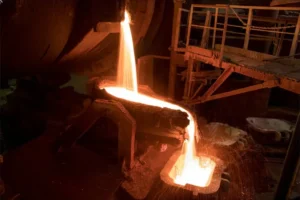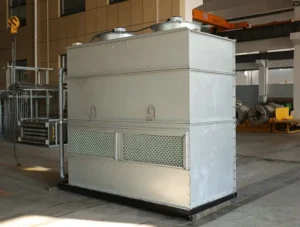В поле плавки металла, Особенно при использовании индукционных печи, фраза “Заряд определяет все” Точно суммирует решающую роль качества сырья во всем процессе плавления и конечного качества продукта. Индукционные печи широко используются для их эффективности, чистота, и точность. Однако, Разблокируя свой полный потенциал в значительной степени зависит от предварительной обработки заряда печи, прежде чем он входит в печь. Надлежащий предварительный обращение, включая очистку, сушка, сортировка, и предварительно нагреть - это краеугольный камень обеспечения безопасного, эффективный процесс плавления и получение высококачественных отливок. Пренебрежение этими этапами не только значительно увеличит потребление энергии и снизит эффективность производства, но также может привести к серьезным случаям безопасности и в конечном итоге приведет к отклоненным продуктам.
Уборка: Первый “Проверка безопасности” плавления
Заряд печи, будь то переработанная сталь, Металлическая стружка, или вернуть материалы, часто есть загрязняющие вещества на своей поверхности, такие как масло, режущая жидкости, песок, ржавчина, и покрасить. При высоких температурах, Эти примеси становятся “нарушители нарушителей” в процессе плавления.
Важность очистки:
- Уменьшает вредные газы и включения: Органические материалы, такие как масло и краски, разлагаются при высоких температурах, производство большого количества дыма, пыль, и вредные газы. Это не только загрязняет рабочую среду, но и увеличивает содержание водорода в расплаве, приводя к дефектам пористости в отливках.
- Снижает потребление энергии: Неметаллические примеси, такие как песок и ржавчина, имеют гораздо более высокие точки плавления, чем метал. Они образуют большое количество шлака, продление времени плавления и потребления дополнительной электрической энергии для нагрева и растопления их.
- Защищает подкладку печи: Некоторые примеси, особенно оксиды, может вступать в химическую реакцию с огнеупорным материалом футеровки печи, разрушая его и значительно сокращая срок службы, тем самым увеличивая затраты на техническое обслуживание.
- Обеспечивает стабильность химического состава: Состав нечистого заряда сложен, затрудняет точное пропорционирование. Это может привести к отклонению химического состава конечного продукта от заданного., влияющие на его механические свойства.
Методы обработки: В зависимости от типа шихты и степени загрязнения, такие методы, как пескоструйная обработка, дробеструйная обработка, кувыркаясь, маринование, или можно использовать промывку щелочным раствором. Для больших объемов металлической стружки, загрязненной маслом., часто используется специализированное оборудование для обезжиривания и сушки.
Сушка: Устранение угрозы взрыва “Вода”
Влажность - серьезная опасность в процессе таяния в индукционной печи. Будь то дождевая вода на ломе, хранясь на открытом воздухе или влаге от резки жидкостей, это представляет серьезный риск безопасности.
Важность сушки:
- Предотвращает пастовые взрывы: Это самый важный момент. Когда мокрый, прилагается, или вода-содержащий заряд быстро добавляется в высокотемпературный расплавленный бассейн, Вода мгновенно испаряется, и его объем резко расширяется (до 1,600 раз или больше). Это запускает насильственный парный взрыв, Достаточно мощный, чтобы сдуть крышку печи и разбрызгивать смертельный высокотемпературный расплавленный металл, вызывая серьезные повреждения оборудования и жертвы.
- Избегает водорода Пористость: При высоких температурах, Вода разлагается в водород и кислород. Водород очень растворим в жидком металле. Во время затвердевания, Растворимость водорода резко уменьшается, и осажденный газ, Невозможно сбежать вовремя, образует вырезок или поры в кастинге, строго скомпрометировать плотность и механические свойства продукта.
- Улучшает эффективность плавления: Нагревание и испарение воды потребляют значительное количество тепловой энергии. Сухой заряд может непосредственно поглощать энергию для нагрева и таяния, тем самым сокращая цикл плавления и сокращение потребления электроэнергии на единицу.
Методы обработки: Все зарядные материалы должны быть полностью сухими перед входом в печь. Это может быть достигнуто с помощью принудительной сушки с использованием специальных печей или предварительных районов, или хранение их в течение длительного периода в защищенном, сухая среда для обеспечения полного испарения. Для трубчатых или пустых материалов, Крайне важно проверить любую захваченную воду внутри.
Сортировка: Точно управлять продуктом “ДНК”
Различные типы и сорта металлических материалов имеют различные химические композиции и содержимое сплавных элементов. Строгая сортировка является обязательным условием для обеспечения окончательного продукта, соответствующего его стандартам производительности.
Важность сортировки:
- Гарантирует точный химический состав: Строго разделяя материалы различных композиций (такие как углеродистая сталь, Сплава Сталь, чугун, нержавеющая сталь, и т. д.) фундаментально для точного партии. Смешанный заряд приводит к неконтролируемому композиции расплава, сделать невозможным производство продукта, который соответствует конкретным требованиям оценки.
- Предотвращает загрязнение вредными элементами: Некоторые материалы содержат элементы, которые наносят ущерб свойствам других. Например, Когда таяние высококачественной стали, включение даже небольшого количества металлов с низкой точкой, такими как свинец (Пб) или цинк (Zn) может сильно ухудшить горячие рабочие свойства стали. Поэтому, эти материалы должны быть тщательно отсортированы.
- Увеличивает скорость восстановления элементов сплава: Раздельная сортировка лома, содержащего ценные легирующие элементы. (например хром, никель, молибден, и т. д.) позволяет их эффективно восстанавливать и повторно использовать, сокращение производственных затрат.
- Оптимизирует процесс плавления: Комбинирование шихтовых материалов разной плотности может повысить зарядную емкость и электрический КПД.. Рациональное сочетание небольших, легкие фигуры с тяжелыми блоками могут помешать “мост” явление, делает процесс плавления более плавным и стабильным.
Методы обработки: В основном это зависит от опытной ручной сортировки., дополнено современным оборудованием, таким как портативный рентгеновский флюоресцентный аппарат. (РФА) анализаторы для быстрой и точной идентификации материалов. Создание строгой системы приема лома и управления складом является ключом к достижению эффективной сортировки..
Предварительный нагрев: Ключевой шаг к энергосбережению и повышению эффективности
Предварительно нагреть очищенные, высушен, и отсортированная зарядка, прежде чем добавить его в индукционную печь является важной мерой в современных методах плавления для повышения эффективности и снижения затрат.
Важность предварительного нагрева:
- Значительно повышает эффективность плавления и снижает потребление энергии: Предварительно разогретый заряд уже имеет большое количество тепловой энергии, что значительно сокращает время, необходимое для того, чтобы нагреть его от твердого состояния до точки плавления, когда -то внутри печи, Таким образом, сокращение времени мощности печи. Исследования показывают, что предварительное нагревание заряда до 600 ° C (1112°Ф) может спасти вокруг себя 15-20% энергии, потребляемой для плавления и повышения производительности. 20%.
- Продлевает срок службы подкладки печи: Добавление простуды, особенно большой, Заряд непосредственно в горячую печь вызывает сильный тепловой удар до нагретой подкладки, что может легко привести к растрескиванию и растрескиванию. Предварительный подогрев уменьшает разницу температур между шихтой и футеровкой., минимизация термического напряжения и эффективная защита футеровки, тем самым продлевая срок его службы.
- Тщательно удаляет влагу и масло: Предварительный нагрев служит заключительным и наиболее тщательным этапом сушки и обезжиривания.. Это гарантирует полное удаление остаточной влаги и масла перед подачей шихты в печь., устранение рисков взрыва и источников водорода.
Методы обработки: Обычное оборудование для предварительного нагрева включает подогреватели дымовых газов, которые используют отходящее тепло печи., подогреватели шихты, работающие на газе или жидком топливе, и специализированные установки электромагнитного индукционного предварительного нагрева.. Загрузка подается в оборудование предварительного нагрева через конвейерную ленту или ковш., подогревается до заданной температуры (обычно между 500-800°C или 932-1472°F), а затем быстро загружают в индукционную печь.
Заключение
В итоге, четыре этапа предварительной обработки — очистка, сушка, сортировка, и предварительный нагрев — взаимосвязаны и необходимы. Вместе, они составляют основу эффективного, безопасный, и экономичная работа индукционной печи. В условиях растущей рыночной конкуренции и ужесточения экологических норм, тщательное управление шихтой и научные процессы предварительной обработки больше не являются обязательными, а являются ключевыми факторами, определяющими основную конкурентоспособность литейного предприятия.. Вспоминая это “Заряд определяет все” а поднятие предварительной обработки шихты на стратегический уровень является необходимым путем к достижению высокого качества., Высокая эффективность, и устойчивое развитие.







